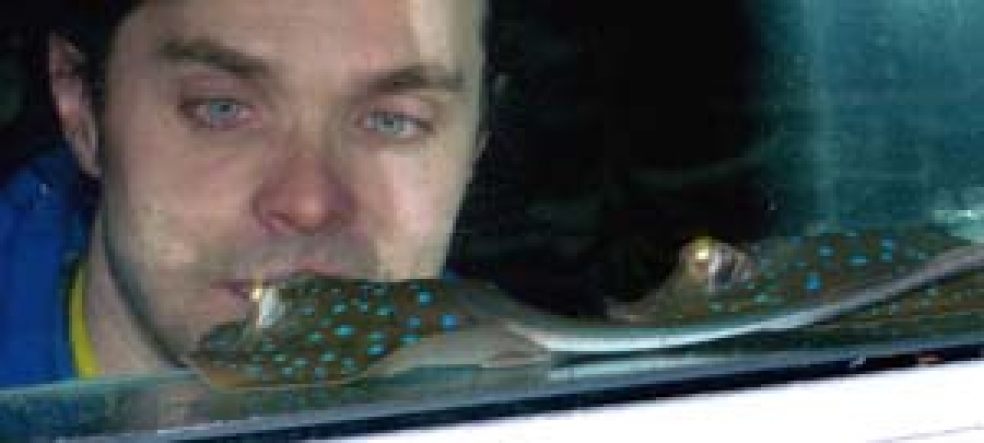
Little rays of sunshine spotted at Living Coasts
A Devon zoo and aquarium has had an unusual spring birth – two baby stingrays.
The bluespotted ribbontail rays - one male and one female - were born on Sunday 17 March at Living Coasts, in Torquay.
Clare Rugg, Living Coasts Operations Manager, said: “The female was getting bigger and bigger and we saw some movement inside her. We have been looking expectantly in the tank each morning for the last five weeks!
“Twins are not unusual – it’s thought that they can have up to five pups per litter. The babies are perfect miniatures of the parents – but they do have their own individual spot patterning.”
The two have been moved to a nursery tank to make sure they feed well. They are being tempted with live rivershrimp - live food is essential to trigger the feeding response. They also get ragworm and oily fish chopped in to manageable pieces. Later we will add smelt and sprat and eventually chopped squid.
Clare: “Once they have achieved a good weight and a good eating regime they will return to the main tank with the adults. It is a great achievement for our aquarist Adam to breed these fish. Only a few collections in the UK hold this species.”
Torquay’s coastal zoo is home to one male, Trevor, and two females, Sandy and Stumpy, plus a female pup born at Christmas named Holly.
Aquarist Adam Johnstone explained: “Aquariums find this species quite challenging and don’t often breed them. The youngsters are about 10 centimetres in diameter and weigh about 160 grams.
“Over the last month or so Stumpy has been throwing her increasing weight around and bossing the whole tank, especially at feeding times, when she made sure she got her fair share of food!”
The International Union for Conservation of Nature (IUCN) has assessed the species as Near Threatened. Although still relatively common and widely distributed, its coral reef habitat is threatened by development and by destructive fishing practices.
The bluespotted ribbontail ray (Taeniura lymma) is found throughout the tropical Indian and western Pacific Oceans, often on coral reefs. It can grow to be 35cm (14 inches) across, 80cm (31 inches) long and 5 kilos (11 pounds). It is capable of inflicting an excruciating wound with its venomous tail spines.
Stingray embryos develop inside eggs that are retained within the mother's body until they are ready to hatch. The young are born live. The gestation period is uncertain, but is thought to be between four to twelve months.
For more information go to www.livingcoasts.org.uk or ring 0844 474 3366.

















